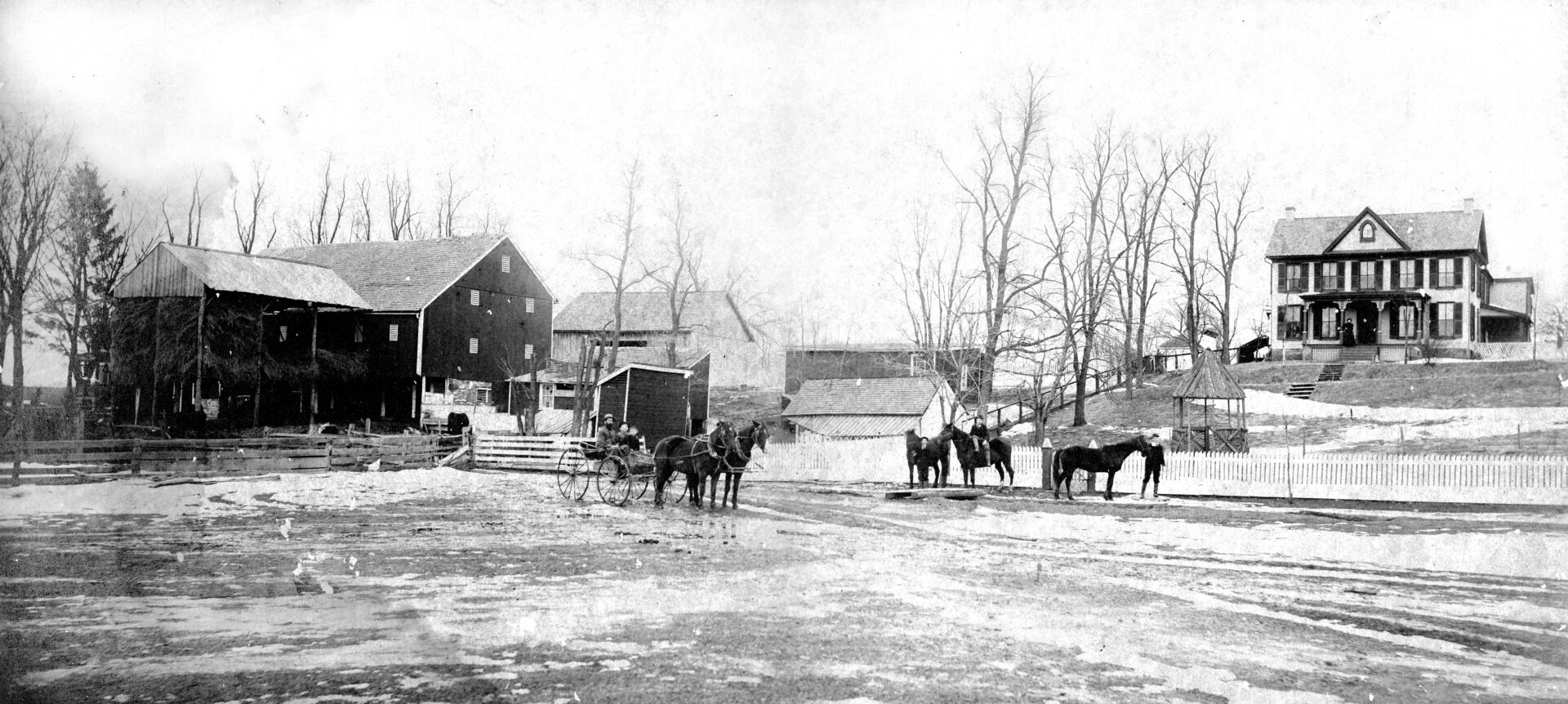Carroll Yesteryears
13 April 2014
1880 Census Gives Peek into Carroll Farm
By Mary Ann Ashcraft
Did you know that census takers in 1850 and 1880 not only recorded the population of the United States but also tallied the agricultural output? Thanks to transcriptions of Carroll’s agriculture censuses by Jeff Duvall, a resident of Georgia but with deep roots in this county, we have a rather accurate picture of our large and small farms in the second half of the nineteenth century.
Louis P. Slingluff was one of the wealthiest farmers in the New Windsor District, so let’s first take a look at what the 1880 agriculture census revealed about his farming operation. His land lay in the fertile Wakefield Valley along the Western Maryland Railroad running between Westminster and New Windsor. The tracks actually separated his lovely home from a huge brick barn, and he may have negotiated an arrangement to have his farm produce picked up at his doorstep by allowing the railroad the right-of-way. Who knows!
Slingluff valued his 190-acre farm at $16,200. The year covered by the census (July 1, 1879-June 30, 1880) he sold $1,824 worth of farm products. His twelve cows produced about 4,500 gallons of milk and 350 pounds of butter, far more than the family could consume, so he obviously sold much of it, perhaps shipping it to market by train. The 200 dozen eggs produced by his chickens were another source of income. He harvested 1,750 bushels of corn from 21 acres and 800 bushels of wheat from 33 acres. In addition he had 50 apple trees which yielded 100 bushels of apples – enough to sell.
Operating a farm of this size required plenty of work by its owner and his family, plus help from the neighborhood. Although Slingluff had sons aged 17 and 18 in the 1880 census, they weren’t listed as working on the farm. Louis was probably wealthy enough to hire extra help during planting and harvesting seasons, and the black and white laborers who lived near him would have been happy for the work at any time of year.
Now let’s look at Andrew J. Baker, a farmer in the Franklin District (northeast of Mt. Airy) in 1880. Baker served as a blacksmith in the Confederate horse artillery during the Civil War. Afterward, he probably made his living as both a farmer and blacksmith. His 46 acres were worth about $2,500. While he likely sold most of the 150 pounds of butter which his two cows produced, the majority of the $700 he earned came from selling 2,000 pounds of tobacco. Tobacco was grown almost exclusively in the southern part of the county. Baker would have cultivated just a few acres because tobacco-raising was very labor-intensive, but if you had a good year, it was a lucrative crop and worth the effort.
The Carroll County Genealogical Society has this agriculture census information on its website at www.carr.org/ccgs/resource.html. If you have an ancestor who lived here in 1850 or 1880 and called himself or herself a farmer, you might want to check out the kinds of crops being raised, amount of livestock, value of the land, and other statistics.
Mary Ann Ashcraft is a library volunteer at the Historical Society of Carroll County.
Photo credit: Historical Society of Carroll County

Photo caption: This photograph of a farm in the Wakefield Valley near Medford was taken about twenty years after the 1880 agriculture census, but it suggests how a prosperous Carroll County farm looked at the turn of the century.





